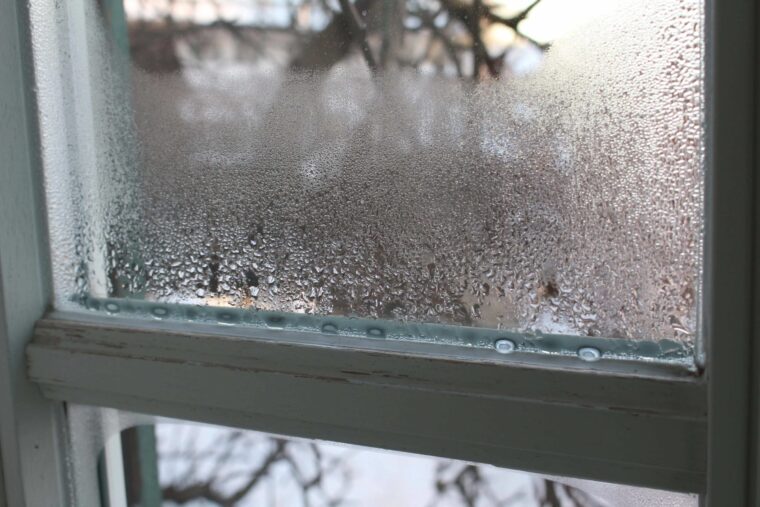Calgary’s unique weather patterns can have a significant impact on the humidity levels in your home. With temperatures ranging from -40°C to 40°C in a matter of months, and sudden chinooks transforming the city into a springtime paradise, Calgary homes must be prepared to withstand the most extreme weather conditions.
Maintaining the proper humidity level in your home is essential to ensure optimal indoor air quality and comfort. Low humidity levels can lead to frequent nosebleeds, dry and itchy skin, and difficulty breathing, among other issues.
On the other hand, high humidity levels can make it difficult for the air to absorb your sweat, causing you to feel hotter. Therefore, understanding the impact of Calgary home humidity is crucial to protect your health and your property.
Calgary’s Climate and its Impact on Home Humidity

Calgary, located in southern Alberta, experiences a semi-arid climate characterized by low humidity and fluctuating temperatures. The city’s climate is also influenced by its location in the foothills of the Rocky Mountains, resulting in weather patterns that can be unpredictable and challenging to manage.
Humidity levels in Calgary can vary widely depending on the season and weather conditions. During the summer months, the city experiences occasional thunderstorms and increased humidity, while the winter months are typically dry and cold. The average humidity level in Calgary is around 50%, which is considered comfortable for most people.
However, high humidity levels in a home can lead to a range of issues such as mold growth, musty odors, and damage to furniture and other household items. On the other hand, low humidity levels can cause dry skin, respiratory problems, and damage to wood floors and other surfaces.
To maintain a comfortable and healthy indoor environment, it is important to monitor and control humidity levels in the home. This can be achieved through the use of humidifiers and dehumidifiers, as well as proper ventilation and insulation.
In addition to affecting indoor humidity levels, Calgary’s climate can also impact the overall health and performance of a home. Fluctuating temperatures and extreme weather conditions can cause damage to roofs, siding, and other exterior components, leading to leaks and other issues. To ensure a home is prepared for Calgary’s climate, it is important to take preventative measures such as regular maintenance and inspections.
Effects of Humidity on Home Interiors

Humidity can have a significant impact on the interiors of a home, causing damage to various elements such as floors, furniture, walls, and more. Here are some of the effects of humidity on home interiors:
Floors
High humidity levels can cause wooden floors to expand and buckle, while low humidity levels can cause them to shrink and crack. Hardwood floors are particularly susceptible to changes in humidity, which can lead to gaps, cupping, and warping. Carpets can also be affected by humidity, as excess moisture can lead to mould and mildew growth.
Furniture
Wooden furniture can also be damaged by humidity, as changes in moisture levels can cause it to warp, crack, or split. Upholstered furniture can absorb excess moisture, leading to mould and mildew growth, as well as unpleasant odours.
Walls and Windows

Humidity can also impact walls and windows, leading to issues such as condensation, mould, and mildew growth. Excess moisture can cause wallpaper to peel and paint to bubble or crack, while dampness can lead to rot and structural damage.
Prevention
To prevent the negative effects of humidity on home interiors, it is important to maintain a consistent humidity level in the home. The ideal humidity level for a home is between 35% and 50%. This can be achieved through the use of a dehumidifier or humidifier, depending on the current humidity level in the home.
Regular maintenance and inspections of the home can also help prevent humidity-related damage. This includes fixing any leaks or water damage promptly, ensuring proper ventilation in bathrooms and kitchens, and using exhaust fans to remove excess moisture.
Health Implications of Humidity Levels

Maintaining proper humidity levels in your home is crucial for your health. Both high and low humidity levels can cause health problems. High humidity levels can lead to mold growth, while low humidity levels can cause dry skin and nosebleeds. Here are some health implications of humidity levels:
Asthma and Allergies
High humidity levels can create a breeding ground for dust mites and mold, which can trigger asthma and allergies. On the other hand, low humidity levels can cause dry air that irritates the airways, making it harder to breathe.
Viruses, Bacteria, and Fungi
High humidity levels can also promote the growth of viruses, bacteria, and fungi, which can cause respiratory infections. Low humidity levels, on the other hand, can cause dry air that makes it harder for the body to fight off infections.
Dry Skin and Nosebleeds

Low humidity levels can cause dry skin, itchy eyes, and nosebleeds. This can be especially problematic during the winter months when the air is naturally drier.
Health Benefits of Proper Humidity Levels
Maintaining proper humidity levels in your home can have several health benefits. Proper humidity levels can help prevent the spread of airborne viruses and bacteria, reduce the risk of respiratory infections, and improve overall respiratory health.
Conclusion
Maintaining the proper humidity level in a Calgary home is essential for both the health and comfort of its occupants as well as the longevity of the building itself.
Indoor air quality can be compromised when humidity levels are too high or too low, leading to health issues such as dry throat, skin irritations, and even chronic snoring. On the other hand, high humidity levels can also lead to the growth of mold and mildew, which can cause respiratory problems and other health issues.
Static electricity is also a common problem in homes with low humidity levels. This can damage electronic devices and cause discomfort for occupants.
In terms of building science, high humidity levels can cause doors to swell and not close properly, while low humidity levels can cause hardwood flooring to shrink and crack.
Health Canada recommends maintaining indoor humidity levels between 30% and 60%. Homeowners can use a humidifier or dehumidifier to achieve the appropriate humidity level, depending on the season and weather conditions.
In conclusion, homeowners in Calgary should be aware of the impact of humidity on their homes and take appropriate measures to maintain the proper humidity level. This will ensure the health and comfort of the occupants and the longevity of the building.
